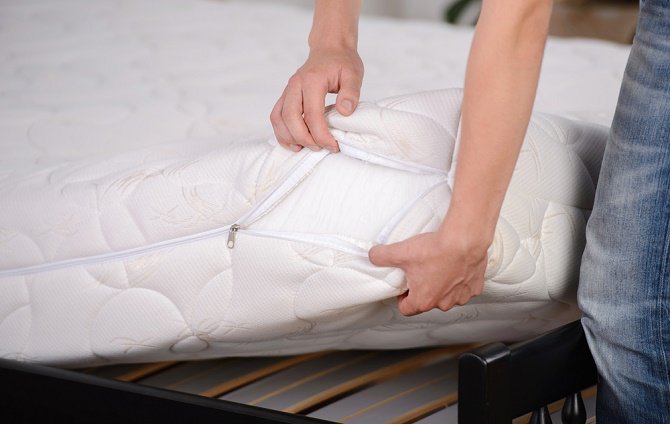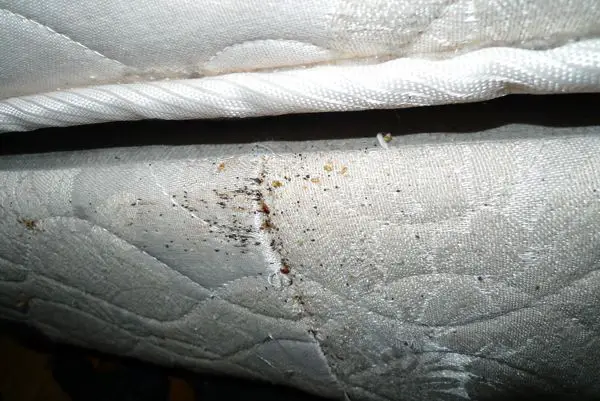The mattress on your bed is full of different types of tiny bugs like dust mites which cause permanent lung damage, and they will live there a long time if you don’t take proper measures to keep it from being a population center where they multiply, causing allergies, infections, asthma and other respiratory tract illnesses. Disinfecting your mattress is an essential chore to prevent this, along with other important measures such as those explained below.

Skin cells and sweat on your mattress, food for dust mites
If you make your bed immediately upon waking up in the morning, the fitted sheets will trap the millions of dust mites that live in your mattress that eat dead skin cells and sweat, and potentially contribute to asthma and allergy problems. An unmade bed, on the other hand, exposes the bugs to fresh air and light, which helps to dehydrate and eliminate them.
Dr. Stephen Pretlove of the University of Kingston School of Architecture offers a simple explanation. When you make the bed, especially right after you wake up, you are trapping your body heat, skin cells, and most importantly your sweat all over the bed. But leaving the bed unmade exposes the sheets to air and light, dries them, and therefore exhausts the possibility of life for the dust mites.
When we sleep, we sweat. The average person can sweat up to a liter of liquid per night. This creates an ideal culture broth for dust mites. The reason behind this tip is to reduce the number of dust mites that live in your bed.
Scientists estimate that there could be up to 1.5 million dust mites living in your bed, being fed by the old skin cells that we leave on our sheets while we sleep.
The problem isn’t so much their existence, but what they leave behind. Their excrement can be irritating and cause allergies and asthma attacks when inhaled.
How to quickly get bugs out of your mattress
If you make your bed right after getting up, all of your skin cells, the moisture of your swear and the dust mites stay trapped under the sheets until bedtime.
Experts recommend making the bed after breakfast and changing the sheets once a week – pillowcases up to twice a week if you are clearly suffering from the respiratory problems described above.
“We know that dust mites can only survive by ingesting water from the atmosphere using small glands on the outside of their body”, said Dr. Stephen Pretlove of the University of Kingston School of Architecture.
“Something as simple as leaving the bed unmade during the day can eliminate moisture from the sheets and mattress so that the dust mites get dehydrated and finally die”, he added.

So yes, experts have recommended leaving the bed unmade all day – save that chore for when you get home at night, but get it ready for sleeping. Some ask, and when can we have the bed nicely made? You can do it when you personally consider it necessary, but if there’s no need to have it made because nobody else will see it like that, you can do it for a certain period of time to let the dust mites disappear little by little from your bed if it already needed to be cleaned.
After a day’s exposure to fresh air and light, many of the dust mites in your bed will have died, letting you breathe cleaner, fresher air. Do this regularly so that you bed can rest, get clean and leave space to be able to make it again for a period of time, especially if it’s hot out and the bed sheets can be lighter.
Combination methods to disinfect your mattress from dust mites
You can also add this mattress cleaning technique. Disinfect it with baking soda and natural disinfectant essential oils like thyme, tea tree, lavender and others. Simply sprinkle a mixture of baking soda with a few drops of essential oils with disinfecting properties, and use a sifter to spread the mixture all over the mattress and leave it for a couple hours. Later, remove it with a vacuum cleaner. Don’t forget to also use mattress protectors so you can easily remove and wash them. All of these together will renew and clean your mattress.
